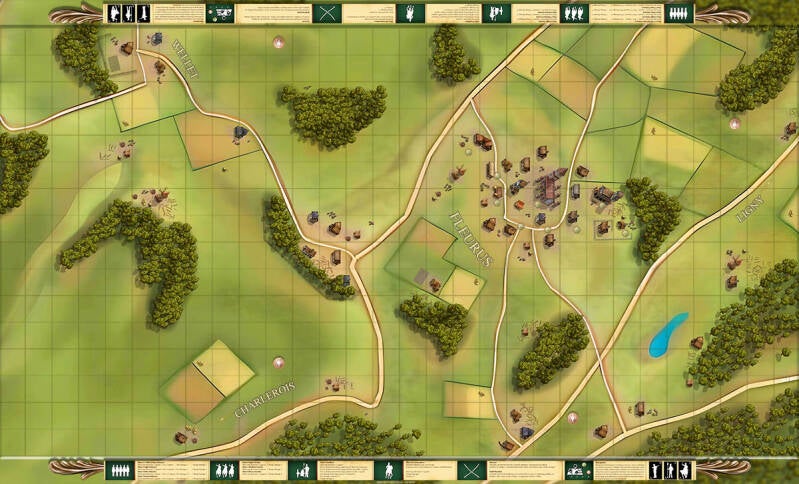
The town of Fleurus: A Strategic Gem in the 100 Days Campaign
The 100 Days Campaign was a pivotal moment in European history, as it marked Napoleon Bonaparte's return to power after his abdication and exile to the island of Elba. As the dust of war settled in 1815, the town of Fleurus emerged as a strategic gem. Situated in Belgium, this humble town played a vital role in the grand scheme of the campaign, leading up to the Battle of Ligny.
Fleurus
Fleurus, with its strategic location, became a hotbed of military activity during this period. Positioned between Brussels and Charleroi, it served as a crucial junction, offering Napoleon and his troops access to key supply lines and communication routes. This made the town an ideal base for the French army to launch their offensive operations against the multinational coalition forces opposing Napoleon. The town of Fleurus may not have been a grand metropolis, but its impact on the 100 Days Campaign was undeniable. Its capture and recapture exemplified the high stakes of war and the intricate web of strategic decisions that shaped the outcome of one of history's most dramatic chapters.

Battle grids
The map is organized into large grids, with each one measuring 10x10cm or 4x4 inches. These grids, which we refer to as operational squares, are then further divided into four smaller squares that are 5x5cm or 2x2 inches in size. This division allows for engagements on a macro level. The larger squares are utilized for moving troops in group formations, while the smaller squares are perfect for tactical engagements.This system offers players the chance to engage in combat using their preferred style.
The battle map is marked with green icons that represent important positions that can be captured. These key positions offer valuable protection against cavalry charges and artillery fire, unless the artillery is being used as howitzers. By strategically placing units in squares where the green icons are located, shelter can be obtained and control of that section of the battle map can be secured. In order to capture a key position, infantry units must successfully charge and replace the defending unit within the square, walls, roads, or at the gate/door. Additionally, mounted Generals can seek refuge within squares containing green icons for added protection and to effectively lead their troops.

Order of battle Nation vs Nation
In the game, players have the incredible opportunity to unleash their strategic prowess by assembling their own personalized order of battle. With the capacity to field up to 80 units on the battlefield per nation, the game truly allows players to showcase their unique tactical style and adaptability. The freedom to create their own order of battle is not only empowering but also opens up a multitude of possibilities for players to explore different strategies and playstyles.
Historical order of battle
To recreate the events that occurred in Fleurus in 1815, it is recommended that the attacking force consists of 40 units of their choosing, while the defenders should have 20 units. The French forces greatly outnumbered the small Prussian contingent during this confrontation. Playing with a 2 versus 1 balance can provide an enjoyable and challenging experience. Initially, the advantage lies with the defenders due to their defensive position and heights behind the town to deploy cannons.

Deployment
The defending Prussian army can deploy in the town of Fleurus, occupying the key positions of the town and preparing to defend them. Artillery icons mark height position where artillery units can be deployed to gain a longer range when firing their guns. The attacking force the French are to de deployed freely across the map in the first 2 battles zones across the map.

Requirements
Content digital download package
The battle map of Fleurus comes as a downloadable package in JPEG files, featuring a high-quality battle map size 89x147cm or 33x59.5 inches poster.
Printing
For the best results, we recommend printing the package at a local professional printer store as the colors may vary when printed from the screen. Print the battlemaps on a 150-200gr or 40-54 lb poster print. For a sturdier feel, you can print the battle map directly onto materials like foam board or on Frontlit PVC Banner. For printing at home, you can utilize online resources like "Posterizer Online." This tool allows you to efficiently segment both maps into tiles for easy at-home printing. Simply choose your preferred format and configure the layout.


